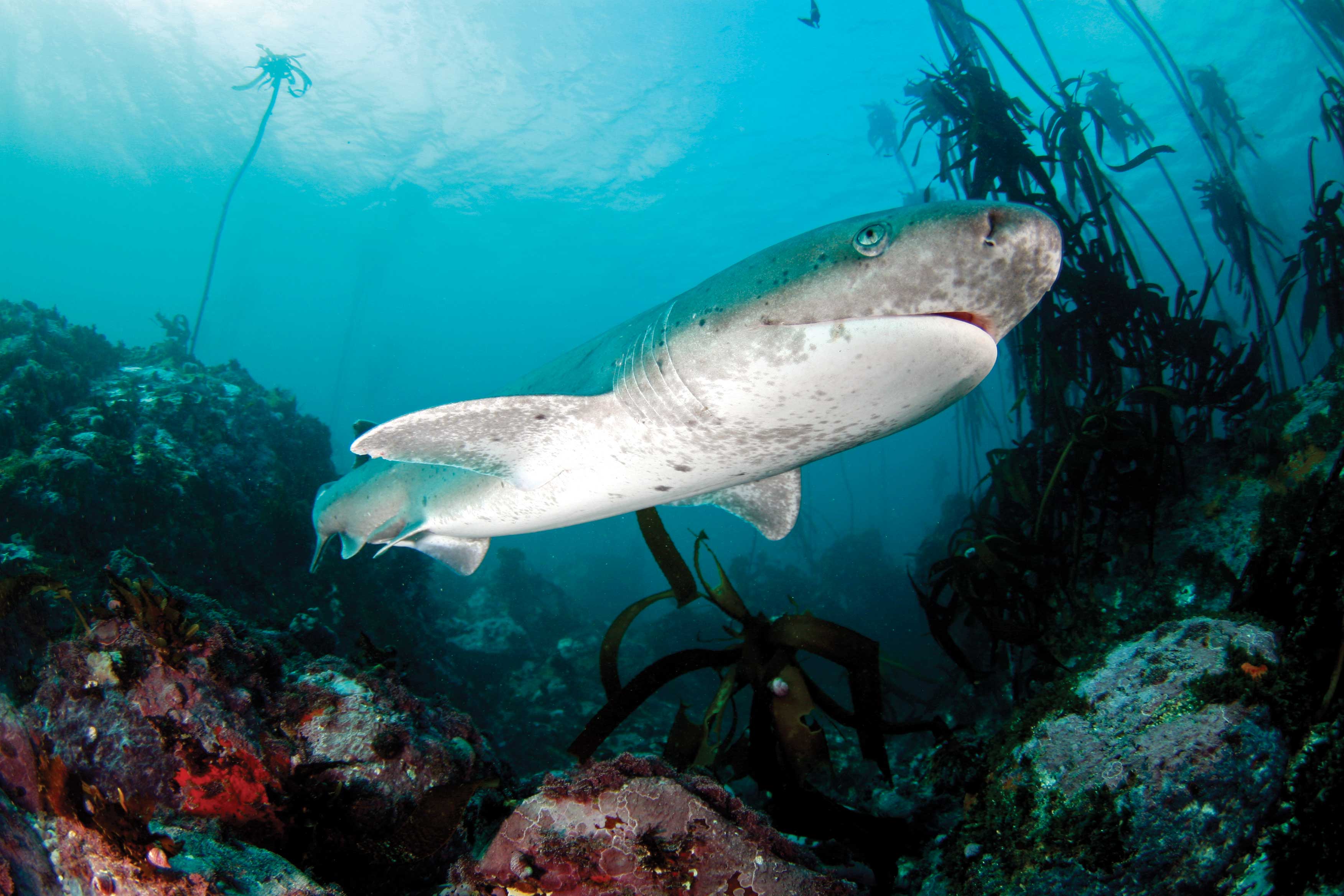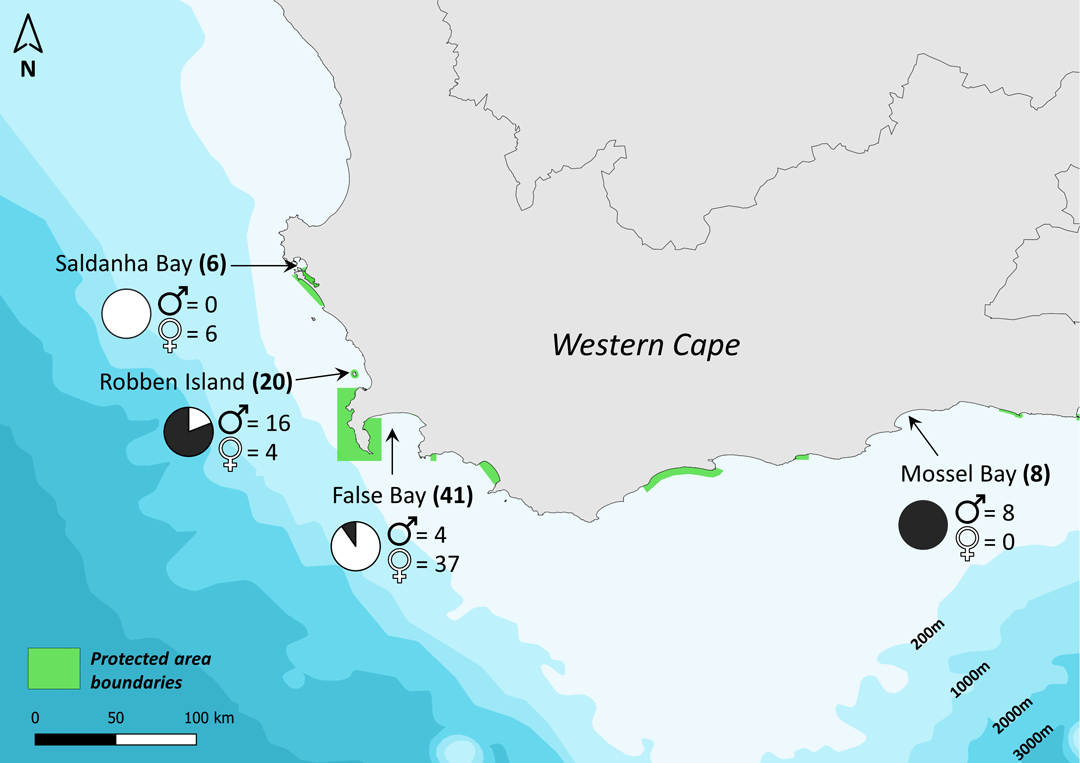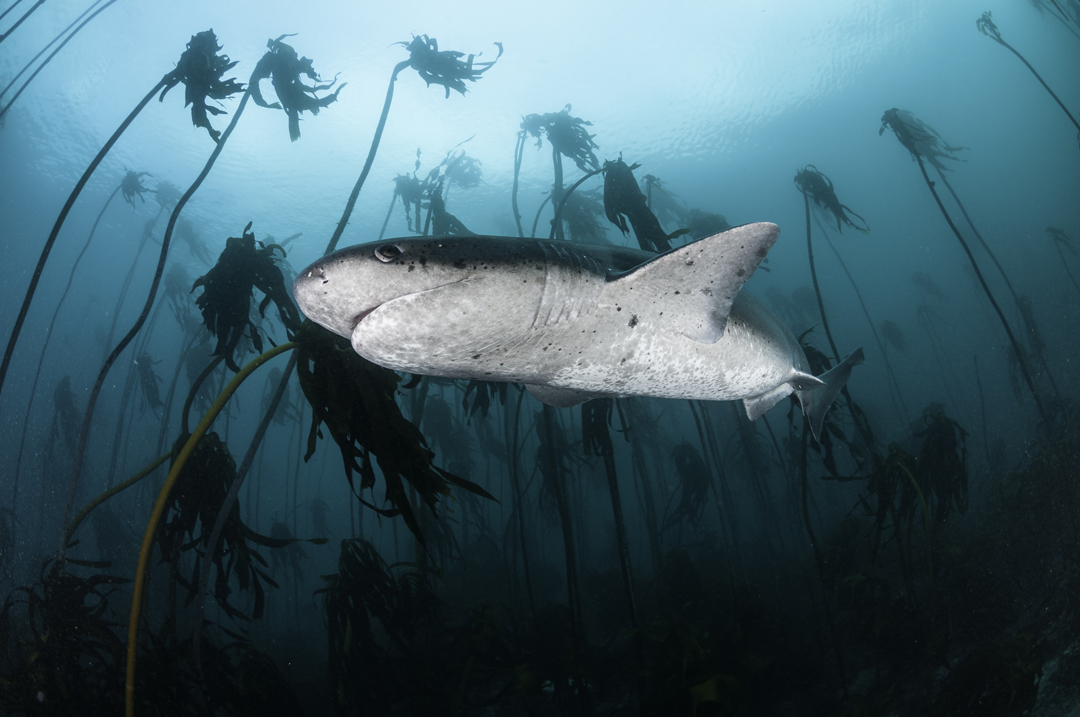ATAP Anecdotes: never underestimate a cowshark

A broadnose sevengill. Photo © Morne Hardenberg
The broadnose sevengill shark (Notorynchus cepedianus), more commonly known as a sevengill or cowshark, is a large (up to 3 m) and fairly common coastal predator in temperate seas worldwide. In Southern Africa, the known range of these sharks stretches from Namibia to the Transkei region in South Africa. Despite their deceptively docile appearance, these sharks are impressive predators and are known to target a wide range of prey from squid and fish to smaller sharks, marine cetaceans and seals. This makes them important apex predators in the coastal ecosystems they frequent. However, despite the important role these sharks play in the ecosystem, there remain large gaps in our understanding of their ecology, behaviour and movement patterns not only in South Africa but throughout their range globally. They are classified as “Data Deficient” by the IUCN and lack any species-specific management strategies in any area, placing them at risk of overexploitation due to their coastal nature and overlap with intensive inshore fisheries in certain areas.

Figure 1
In 2013, the collaborative Sevengill Shark Project was kicked off in South Africa, involving the participation of numerous organisations including Shark Spotters, UCT, SAIAB, ATAP, the Two Oceans Aquarium and Oceans Research, with additional funding from the NRF and Save our Seas Foundation. The key objectives of this project are to understand more about the behaviour and spatial ecology of sevengills in South Africa, as well as identify patterns in movement and habitat use that can be used to advise management approaches for this species. One of the key methods used in this study is acoustic telemetry, and the ATAP array of receivers has provided an invaluable tool for investigating the broad scale movement patterns of sevengills along the South African coast. Tagging of sevengills has taken place primarily in False Bay, which hosts the largest known seasonal aggregation of sevengill sharks globally, as well as opportunistically at a number of other sites along the South African coast, including Robben Island, Saldanha Bay and Mossel Bay (Fig 1). To date, a total of 75 sevengill sharks have been tagged at these sites (47 female, 28 male), and tracked along the South African coast using the national array of receivers maintained by ATAP.

Photo © Tamlyn Engelbrecht
Detection patterns of these tagged sevengills have shown these sharks alternate between extended periods of residency in specific areas, to broadscale coastal migrations. Sharks across a range of maturity stages (immature, subadult and mature) were found to be capable of these large scale migrations, but there was a large amount of individual variation in movement patterns. For example, one subadult male tagged near Robben Island in October 2016 remained around the island until January 2017, whereafter it was absent from the array for two months, before being detected in Mossel Bay (over 600 km east of Robben Island) in March 2017. This male did not hang around for long in Mossel Bay, and just over a month later, in April 2017, was detected up the Breede river. Fascinatingly, this shark was not detected on any receiver in the array for the rest of 2017, but was detected in the Breede river in January 2018, nearly 8 months after the last recorded detection for this shark. In another impressive case, a subadult female tagged in False Bay in March 2013 spent long periods over spring and summer in False Bay, but was detected in Mossel Bay for short periods over the autumn and winter months. This pattern was observed consecutively from 2013 – 2016, with the last detection of this particular shark recorded in False Bay in March 2016. The lack of detections over the past three years means this individual likely succumbed to natural or fishing mortality. Site fidelity (the return to specific areas over multiple seasons/years) was observed for numerous individuals, both male and female, which returned to certain coastal sites repetitively after extended absences or migrations to other coastal areas.

A broadnose sevengill shark (or cow shark), swims amongst the kelp forest in False Bay, near Cape Town, South Africa. Photo © Wildestanimal | Shutterstock
Currently, we are still teasing apart the drivers behind these movement patterns of sevengills. There is a broad range of variables that can influence the movements and habitat use of a species, ranging from predictable cycles in environmental variables and prey distribution, to stochastic, unpredictable drivers such as changes in the distribution of competitors and predators. It is clear, however, that the wide-ranging nature of this species requires management at a national scale. While important areas such as the Miller’s Point aggregation site in False Bay, as well as the area around Robben Island, fall within the boundaries of Marine Protected Areas (Fig 1), large stretches of the coast remain unprotected, and hence species-specific fisheries management needs to be used in tandem with protected areas to prevent overexploitation of this important coastal predator.
